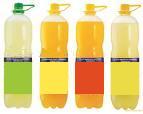 Fruit Juices may be prepared at home from fresh fruits using hand or electric juicers. They may be marketed in concentrate form, sometimes frozen, requiring the user to add water to reconstitute the liquid back to its “original state”. Fruit Juices are often consumed for their health benefits because they are rich in vitamin C, folic acid, potassium, is an excellent source of bio-available antioxidant phytochemicals.
Fruit Juices may be prepared at home from fresh fruits using hand or electric juicers. They may be marketed in concentrate form, sometimes frozen, requiring the user to add water to reconstitute the liquid back to its “original state”. Fruit Juices are often consumed for their health benefits because they are rich in vitamin C, folic acid, potassium, is an excellent source of bio-available antioxidant phytochemicals.
Selling fruit juices nowadays is a profitable business because the markup is 100 to 150 percent and the market is big. The demand never goes out and if you pick a good location, you may recover your investment in just one day. With P3,000.00 to P5,000.00 start-up capital for 2 packs of juices and 1,000 ml of puree, you can start a profitable business making fruit juices, purees and concentrates.
You may supply offices and canteens or rent a stall to sell them.
How to make Artificial Fruit Juices, Purees and Concentrates
Materials Needed:
- Blender
- Strainer
- Sealer
- Measuring spoons and cups
Procedure
How to Make Artificial Fruit Juices:
- Prepare 500 ml of water, 1 cup of sugar, ¼ teaspoon of xantham gum (P60 per 60 grams), 1/8 teaspoon of sodium benzoate (P16 per 100 grams), ½ teaspoon of citric acid (P66 per kilo), and 1/8 teaspoon of flavoring (P710 per liter) from chemical stores.
- Now mix the sugar and xantham gum in a pan and then slowly add the water, stirring constantly to make sure the mixture is even and lump-free.
- Heat the mixture to 80-85 degrees Celsius, stirring once in a while to even the heating. Then remove the pan from the heat and add sodium benzoate and citric acid – stirring constantly until evenly mixed.
- Now pour 250 ml of the mixture into the measuring cup, then add droplets of flavoring (you may use a medicine dropper).
- Mix the juice well and then pour into a pouch. Use a sealer to close it, making sure you remove bubbles from the juice because trapped air increases the number of pathogens in the mixture and shortens the product’s shelf life.
- Now immerse the product in tap water until the temperature goes down to about 40 degrees Celsius.
How to Make Purees:
You may use fresh and ripe fruits with pulp like mangoes, apples, pineapples, and oranges. If you prefer mangoes, you’ll need 1.5 kilograms of the fruits and 0.05% or 0.5 gram of citric acid per kilogram of mangoes.
- Using gloves ensure cleanliness, wash the fruits thoroughly, peel the skin, and then scrape off all the pulp.
- Weigh the pulp – the average weight of pulp you get from 1.5 kilograms of mangoes is about 900 grams – and then put it in the blender to reduce it into puree form.
- Now pasteurize the puree by heating it in its container for three to five minutes in the stove. You may add sugar to enhance the puree’s sweetness or add more mangoes if you find it too luscious.
- Add 0.05% citric acid (1/4 teaspoon per liter) and mix it slowly until the citric acid dissolves.
- Pour into a dry bottle, cool, and then label.
How to Make Concentrates:
You may also concentrate any fruit of your choice, though this is normally done to fruits without pulp like kalamansi.
- To start, you’ll need two cups of fresh kalamansi, 3.5 cups of sugar, 1/8 teaspoon of sodium benzoate, and ¼ teaspoon of citric acid. You’ll also need a knife, stirrer, basin, and bottle for packaging.
- Wash the fruits and then cut them in half before squeezing the juice out and using a strainer to separate the seeds.
- Add sugar and then heat the juice at 85degrees Celsius until the liquid is reduced.
- Pour into a bottle while still warm to kill off microorganisms, and then seal the bottle.
TIPS:
- Watch your inventory. Buy only form reliable supplier to get fresh fruits. You may freeze fruits before making puree to reserve their flavor, and if you must use artificial flavors, make sure they taste like the real thing and are safe.
- Keep your workplace clean. You don’t want to sell beverages full of bacteria and pathogens. When storing products, know that minus 18 degrees Celsius is the ideal temperature for storing fruit juices and extending their shelf life.
- Study your markets. Understand what your customers prefer in juices, concentrates, and purees so you can give them what they want.
Can we use the first formulae for making any fruit juice? Or there is different for formulas for evry drink?